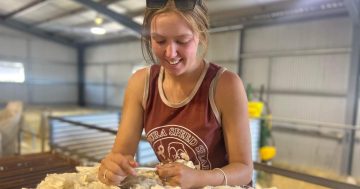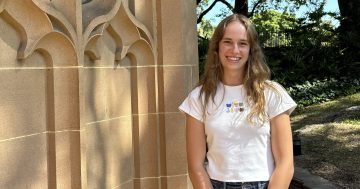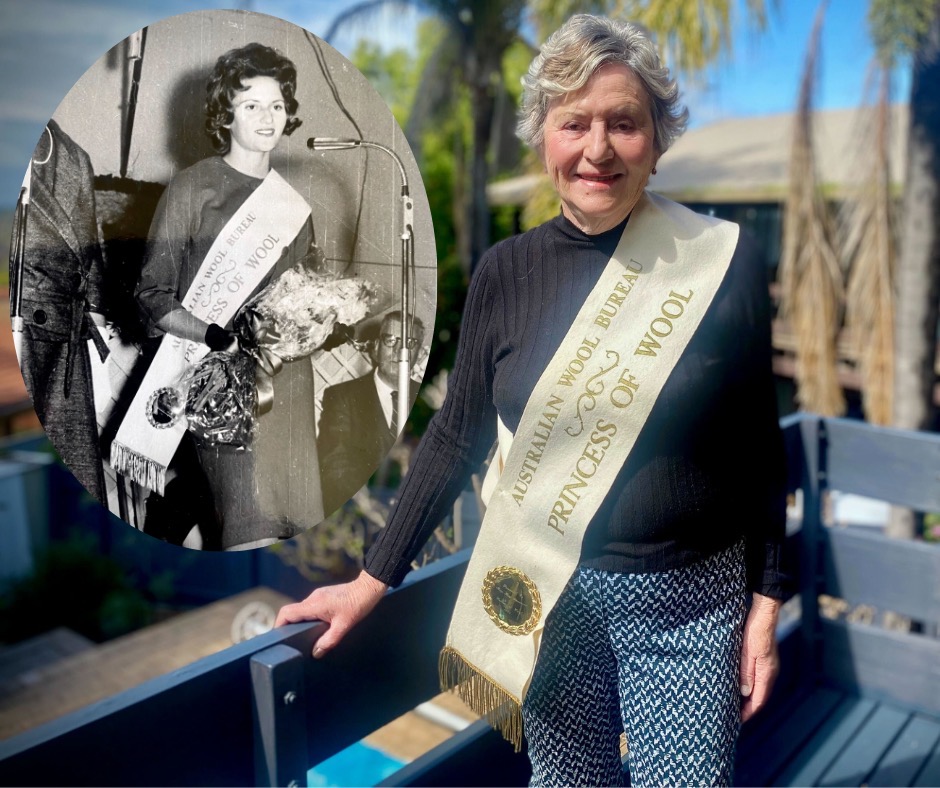
Princess of Wool Kay Mitchell relives that glorious day in 1963 (insert). Photo: Oliver Jacques.
Imagine when ‘wool princesses’ paraded their grooming for judges while wine tasters raised money for The Spastic Centre. It’s a good thing Twitter didn’t exist in the 1960s.
At a time when Australia was riding on the sheep’s back, Griffith was a powerhouse of wool production. In 1963, the town was one of several in the country to celebrate the industry via an annual wool festival. The week-long program included school concerts, a fashion parade, wool art competitions, a ball and a De Bortoli Wines wine tasting event to raise money for a disability charity then known as The Spastic Centre.
But the marquee festival event was undoubtably a princess of wool competition, where five judges rated single girls aged between 16 and 23 on their deportment (poise), dress sense, grooming, personality and general appearance as they competed for the coveted crown.
It was fitting that a Griffith icon, Kay Mitchell (nee Stevenson), was given the honour of the title. While her stunning physique had already earned her gigs modelling for dress shops on Banna Avenue, Mrs Mitchell said general knowledge was as important as beauty to the judges.
“I was sat in front of five judges and they asked me all sorts of questions on irrigation, crops and general farming … we were also asked about politics, like who was the minister for agriculture, etc,” she said.
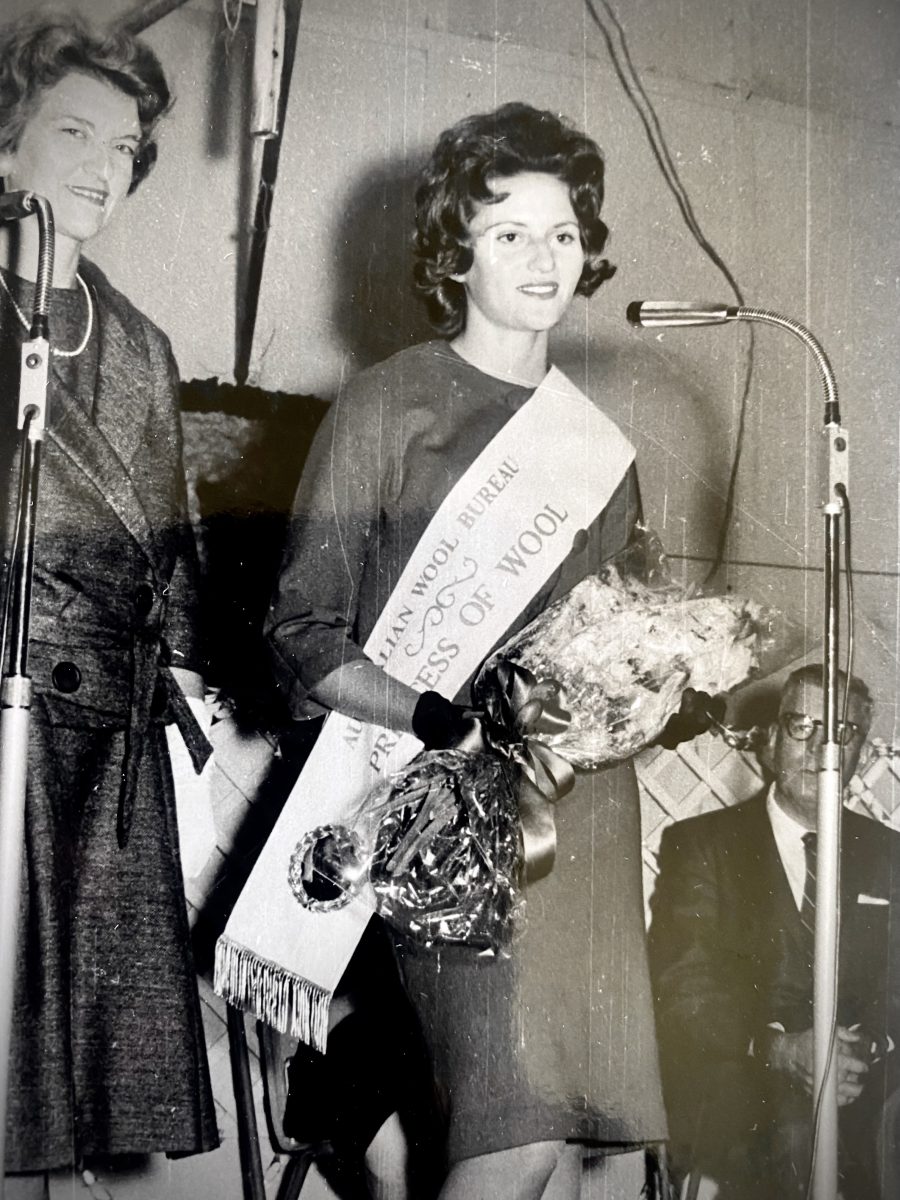
Kay Stevenson wins her crown in 1963. Photo: Supplied.
Seventeen-year-old Kay edged out competitors Patricia Thompson, Helen Bowditch, Daphne Johnson, Margot Jeffery, Pamela Carroll, Judith Morton, Maxine Hodgson and Helen Vearing to take the crown. She won 100 pounds worth of prizes (around $3000 in today’s money), including a return trip to the Sunshine Coast. It also earned her some unwanted attention.
“I had boys phoning me up to ask for dates, but my dad was very protective. He would say ‘hey, she’s only 17’,” Mrs Mitchell said.
But she continued to have success in similar events, later crowned Miss Broadway Hotel and Miss South Australia Quest. Kay might have considered a career on the catwalks of Milan, but modelling wasn’t her calling.
“I was born to be a teacher. That’s all I wanted,” she said.
Mrs Mitchell would go on to have a distinguished career in education, teaching at Griffith East Public School for 12 years and a further dozen years at special needs school Kalinda. She was also known for her athletic and swimming prowess, winning several medals in the sports.
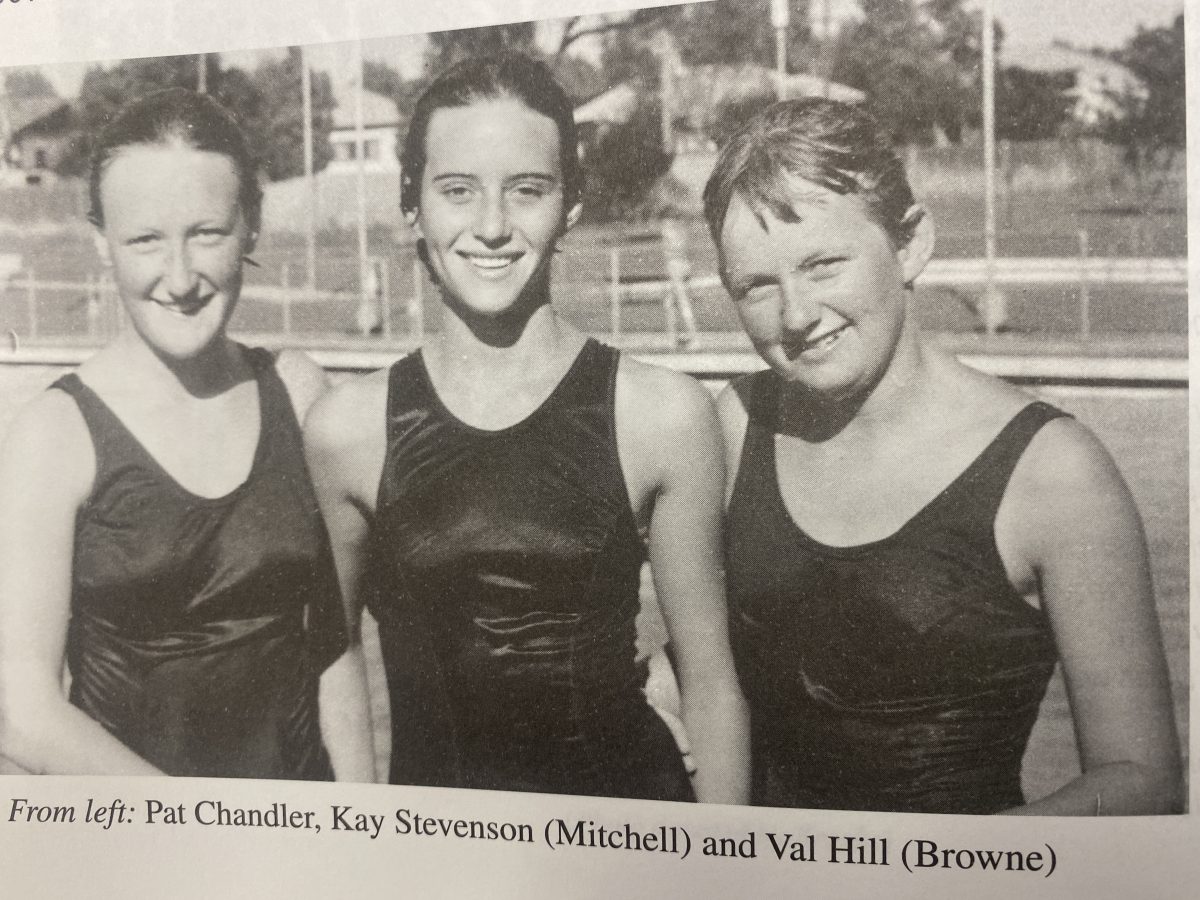
Kay Stevenson (middle) wins a swim event in the 1960s. Photo: Supplied.
“As a child, I started playing piano, but I always wanted to be outside … in 2000 [when Sydney hosted the Olympics], I got to carry the torch from Broome’s [fruit shop] to the post office,” she said. “That was a real highlight for me.”
Mrs Mitchell’s love of sport was inherited from her father Bob and grandfather Charles, who were pioneers who literally helped build Griffith. Bob Stevenson established the first ready-mix concrete business in the Riverina, which endures today as JJ Stevenson and Sons.
The wool princess is also still going strong, though mourns the recent loss of her beloved husband Bob, who she was married to for 55 years. She remains active in Soroptimist International Griffith, a global volunteer movement that fights for women’s rights.
“I’ve always had lots of faith,” she said.







